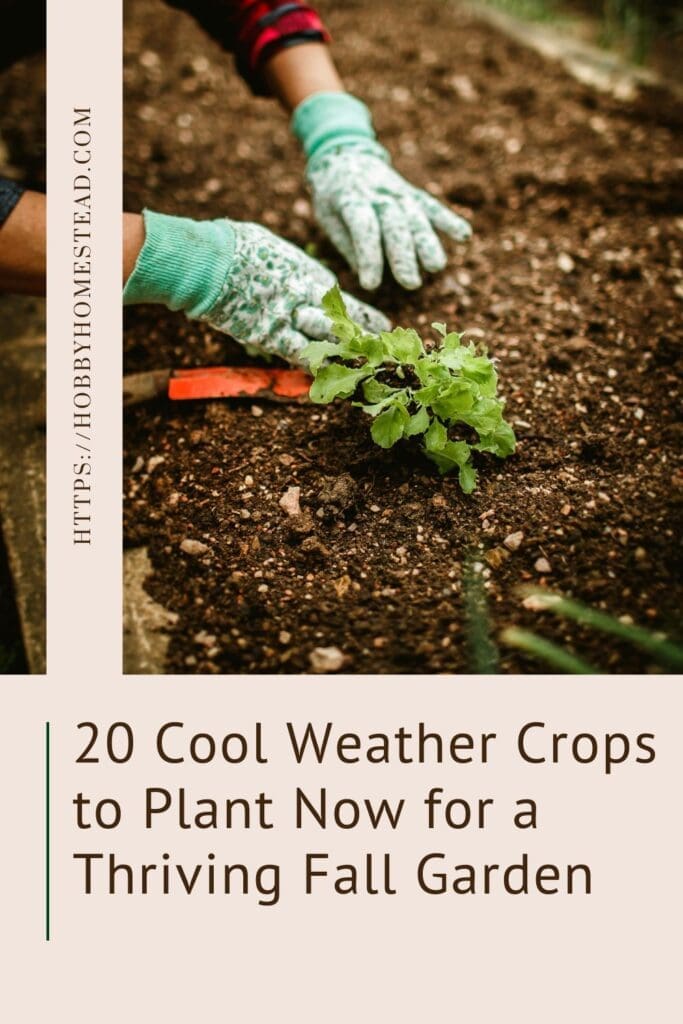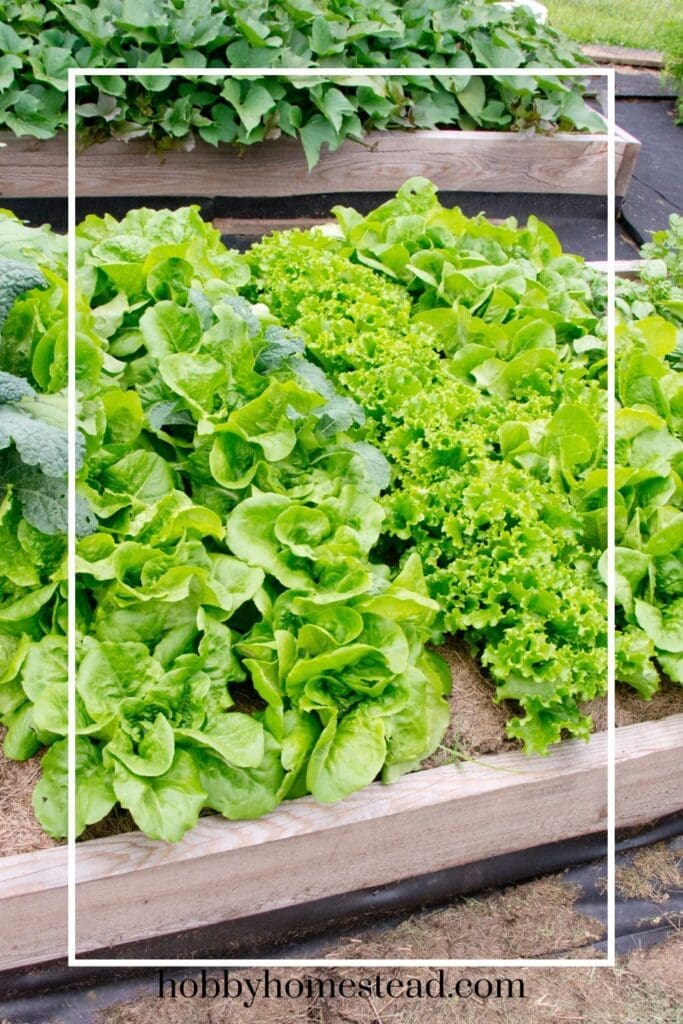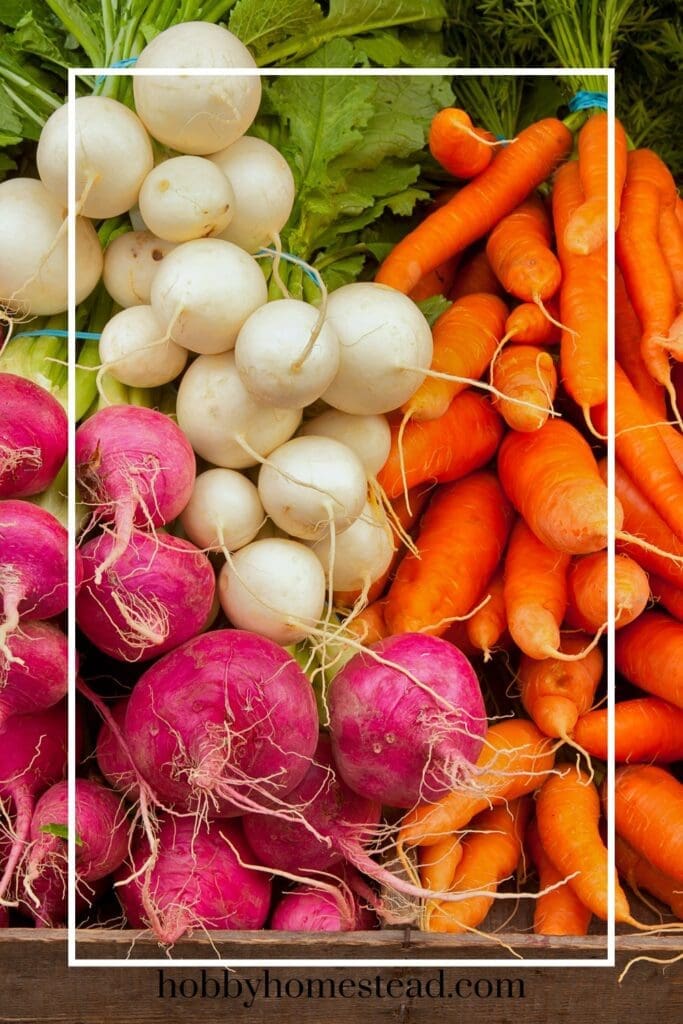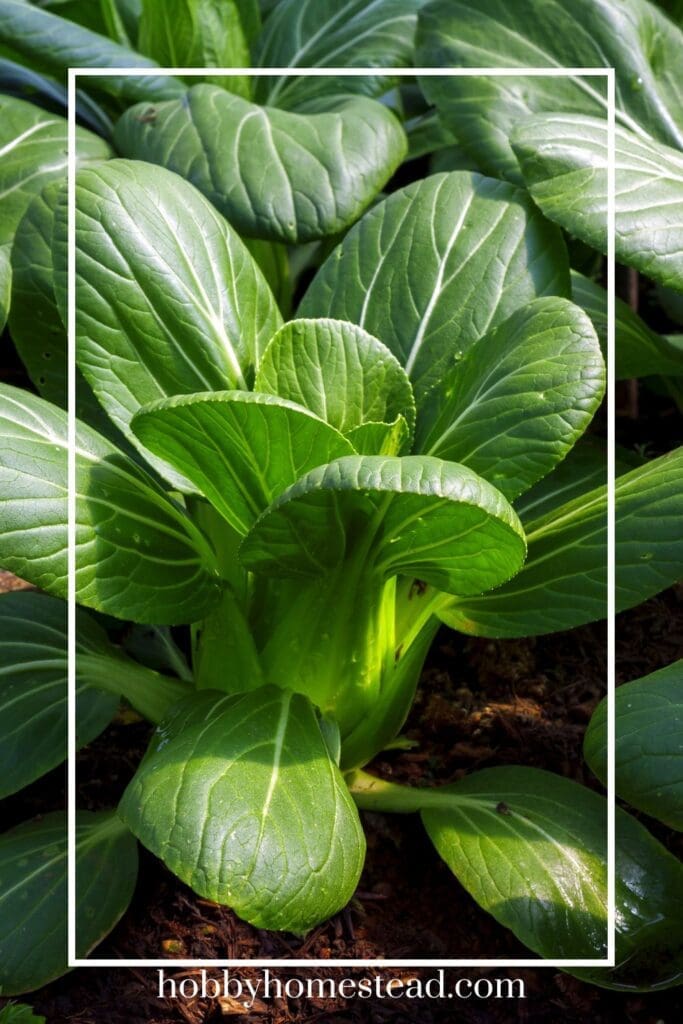Let’s talk about 20 cool weather crops you can plant now to keep your garden thriving well into the crisp autumn months.
As summer starts to wind down here in Wisconsin, many gardeners think it’s time to pull up the plants and pack up the tools. But for us homesteaders, this is actually the perfect moment to start again.
Fall gardening gives you one last chance to enjoy homegrown food. And often with fewer pests, sweeter flavor, and more reliable yields.
Let’s make the most of your garden space, even with a shorter growing window.

🌾 Why Plant a Fall Garden?
Planting a second round of crops in late summer can feel like a secret weapon. Did you know? You can harvest fresh produce well into fall. Cool-season crops often taste better after a light frost and face fewer pest issues than summer vegetables.
Benefits of fall gardening
- Takes advantage of soil still warm from summer
- Reduces the need for frequent watering
- Helps minimize weeds and insect pressure
- Provides healthy greens and roots long after tomato season is done
- Fits perfectly into a self-sufficient homesteading lifestyle
Tips for Fall Gardening Success
In northern climates like Wisconsin, timing is everything. Here are a few tips to keep in mind.
- Know your first frost date. In much of Wisconsin, that falls between late September and mid-October. Use this date to count back the days to maturity for each crop.
- Choose fast-maturing or cold-hardy varieties. Especially important with our short season.
- Use row covers or low tunnels to protect from frost and extend your harvest by weeks.
- Enrich your soil before replanting with compost or aged manure to give your fall crops a healthy start.
- Start seeds indoors in mid to late summer for transplants, especially for brassicas.
20 Cool Weather Crops to Plant Now
Here are some of the best vegetables to sow or transplant in late summer for a productive fall garden. We’ve included planting and care tips tailored for a short-season homestead.

🥬 Leafy Greens
1. Kale
- Days to maturity: 50–60
- Tips. Extremely cold-hardy. Leaves get sweeter after frost. Sow directly or transplant.
- Kitchen use: Sautéed, in soups, or dehydrated into chips.
2. Spinach
- Days to maturity: 40–50
- Tips. Sow directly and keep well-watered in hot weather. Will overwinter in some areas with protection.
- Kitchen use: Salads, quiches, or wilted into pasta dishes.
3. Swiss Chard
- Days to maturity: 50–60
- Tips. Tolerates light frost; harvest outer leaves as needed.
- Kitchen use: Great steamed, sautéed, or added to stir-fry.
4. Lettuce
- Days to maturity: 30–45
- Tips. Best in cooler temps. Choose leaf varieties for quick harvest.
- Kitchen use: Salads, wraps, and sandwiches.
5. Arugula
- Days to maturity: 20–30
- Tips. Fast grower. Succession plant every 2 weeks.
- Kitchen use: Peppery flavor perfect for salads and pizza toppings.

🥕 Root Vegetables
6. Carrots
- Days to maturity: 60–75
- Tips. Sow directly in loose soil. Mulch well to protect from frost.
- Kitchen use: Roasted, raw, or added to stews.
7. Beets
- Days to maturity: 50–60
- Tips. Harvest greens early, bulbs later. Cold-tolerant and hardy.
- Kitchen use: Roasted, pickled, or steamed.
8. Turnips
- Days to maturity: 40–60
- Tips. Quick to mature. Sow directly and thin seedlings.
- Kitchen use: Mashed, roasted, or used in soups.
9. Radishes
- Days to maturity: 20–30
- Tips. Super fast. Plant every 1–2 weeks for continuous harvest.
- Kitchen use: Crisp in salads or roasted for a mild flavor.
10. Rutabagas
- Days to maturity: 80–90
- Tips. Plant ASAP for fall harvest. Needs time to size up.
- Kitchen use: Great in stews or mashed like potatoes.

🥦 Brassicas (Cabbage Family)
11. Broccoli
- Days to maturity: 60–70
- Tips. Transplant seedlings for best results. Prefers cooler temps for heading.
- Kitchen use: Steamed, roasted, or stir-fried.
12. Cauliflower
- Days to maturity: 60–75
- Tips. Sensitive to heat. Choose fast-maturing varieties.
- Kitchen use: Roasted, mashed, or used in grain-free recipes.
13. Brussels Sprouts
- Days to maturity: 90–100
- Tips. Plant early. Needs time to develop but tolerates frost well.
- Kitchen use: Roasted with olive oil or sautéed with bacon.
14. Cabbage
- Days to maturity: 65–90
- Tips. Transplant for best timing. Cold-hardy and stores well.
- Kitchen use: Slaws, soups, and fermentation (sauerkraut!).
15. Kohlrabi
- Days to maturity: 45–60
- Tips. Easy and fast. Sow directly or transplant.
- Kitchen use: Crunchy raw, or sautéed like turnips.

🌱 Legumes & Other Cold-Hardy Crops
16. Peas
- Days to maturity: 50–65
- Tips. Plant a second round in late summer. Protect from frost.
- Kitchen use: Stir-fries, soups, or eaten fresh.
17. Green Onions (Scallions)
- Days to maturity: 60–70
- Tips. Tolerate cold well. Sow in clumps or rows.
- Kitchen use: Garnish soups, eggs, stir-fries.
18. Garlic (for overwintering)
- Days to maturity: Planted in fall, harvested next summer
- Tips. Plant cloves in October. Mulch well.
- Kitchen use: Essential kitchen staple and easy to grow!
19. Mustard Greens
- Days to maturity: 30–40
- Tips. Fast-growing. Cut and come again harvest.
- Kitchen use: Spicy flavor—great cooked down or in soups.
20. Pak Choi (Bok Choy)
- Days to maturity: 45–60
- Tips. Does well in cooler temps. Best sown directly or transplanted.
- Kitchen use: Stir-fries, noodle bowls, and braised dishes.
Extend Your Fall Harvest
If you want to stretch your season even longer, consider these tools and techniques:
- Row covers or frost cloths. Keep plants up to 5–10°F warmer.
- Cold frames or low tunnels. Great for leafy greens and herbs.
- Succession planting. Keep replanting fast crops like radishes and arugula every few weeks.
- Mulching. Insulates soil and roots from sudden frosts.
🍂 Fall Gardening
Fall gardening is one of the best ways to stretch your growing season and enjoy fresh, nutrient-dense food long after most folks have closed up shop.
For us homesteaders in places like Wisconsin, it’s about using every inch of space and every bit of time before winter hits.
Try adding just a few of these cool-weather crops to your garden and see how much more you can harvest this season. Whether you’re looking to fill your pantry, root cellar, or dinner table, these 20 crops will help you get there.


